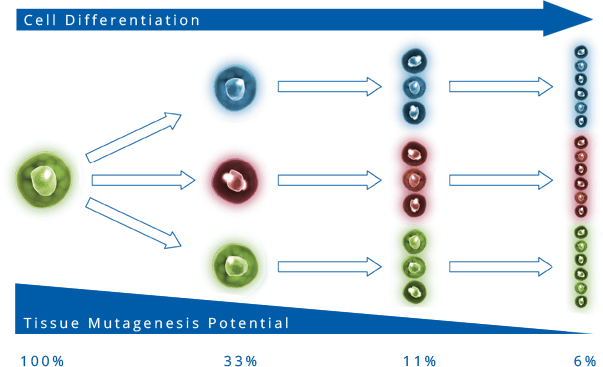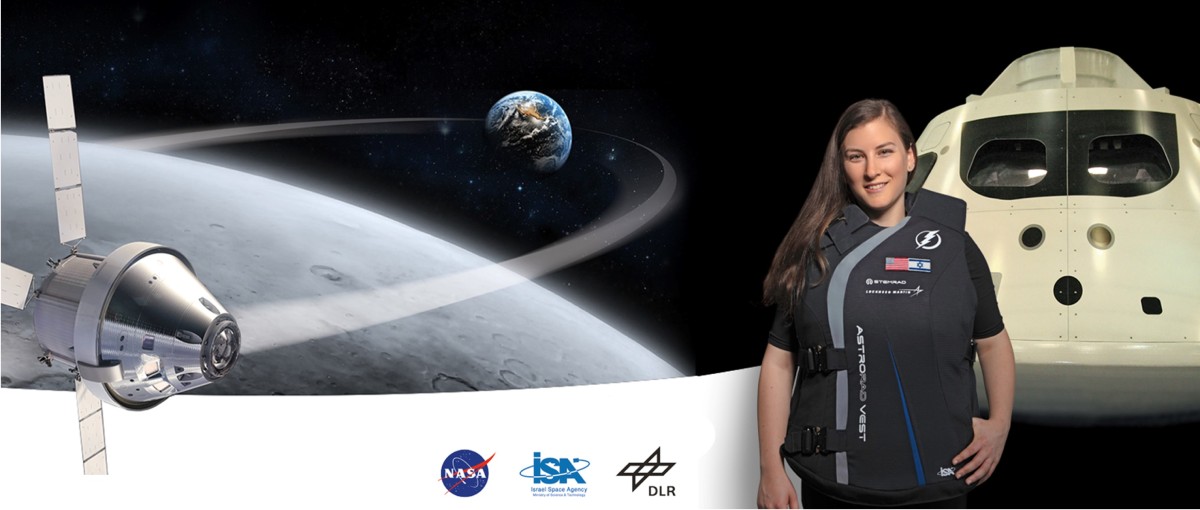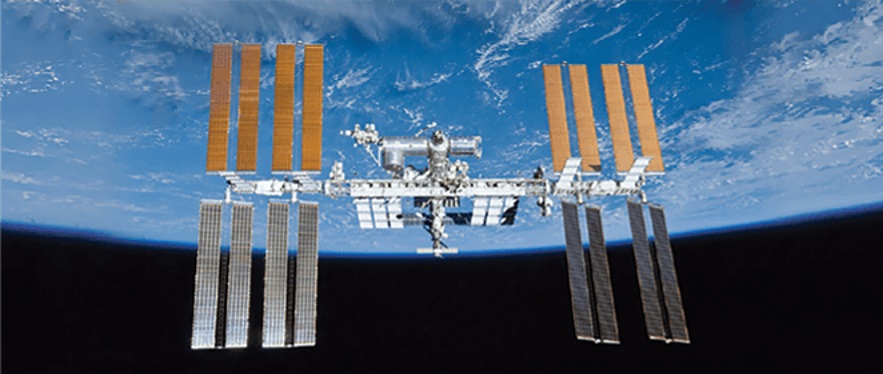AstroRad Shield for Astronauts and Commercial Spaceflight
In the press
The AstroRad is a next-gen radiation vest, personal protective equipment for astronauts to wear beyond low Earth orbit (LEO) that markedly reduces Radiation Exposure Induced Death (REID) such as cancer while eliminating the possibility of Acute Radiation Syndrome (ARS) due to solar particle events (SPE). AstroRad was co-developed by StemRad and Lockheed Martin to mitigate SPE effects, with initial research and development support coming from the Space Florida-Israel Innovation Partnership program. The AstroRad equipment follows previous advancements in wearable radiation suit developed by StemRad – namely the 360 Gamma equipment which protects emergency, military and nuclear reactor personnel from gamma radiation during radiological incidents. Wearable protection is much more mass efficient than shielding the entire spacecraft and since the energy of SPE radiation is considerably less than GCR, the shielding provided by the AstroRad is very effective at mitigating SPE exposure – even during the most intense events.

Deployable alone or in combination with on-board storm shelter

Full mobility and enhanced ergonomics in microgravity

Enabler of long duration deep-space missions to the Moon and beyond
The AstroRad uses a proprietary smart shielding design to selectively protect those organs and tissues which are most sensitive to radiation in terms of REID probability. This approach provides the greatest biological impact of protection with the least amount of mass. Tissue weighting factors are assigned to organs and tissues in the body to reflect the variance in radiation sensitivity, with organs such as the lungs, bone marrow, colon, stomach, breasts and ovaries being among the most sensitive. Selective protection of these organs, and tissue-resident stem cell concentrations within them, was accomplished by designing variable shielding thickness to complement the body’s own shielding. This methodology results in an intriguing, functional topographic structure.
Selectively shielding stem cells enables regeneration of damaged tissue, thereby facilitating recovery from acute effects of radiation exposure. At the same time, shielding stem cells and progenitor cells also provides a disproportionate advantage in reducing the probability of radiation-induced cancer. This is due to the exponential progeny size of a stem or progenitor cell compared with a differentiated cell. Thus, a stem cell harboring a mutation will pass this mutation onto a large number of daughter cells, increasing the frequency of mutated cells in an organ and the probability of malignancy in that organ.
The shielding itself in the AstroRad is comprised of a polymer with a high abundance of hydrogen which is advantageous for shielding against space radiation because it minimizes the generation of secondary radiation. Individual solid shielding elements are organized into a scale-like architecture to allow for uninhibited, comfortable movement of the astronauts while wearing the AstroRad. StemRad is currently exploring the use of recycled plastics materials generated onboard future spacecraft for use in the shielding elements which would dramatically decrease the payload mass associated with the equipment.
According to simulation studies, the AstroRad provides protection on par with the onboard storm shelter of Orion while enabling the crew to exit the storm shelter to perform important activities even in the midst of a proton storm. Also, consistent with the ALARA radiation protection principle, the AstroRad is compatible for use even within the spacecraft’s storm shelter so the crew can combine both protection tools simultaneously to minimize long-term health risks.
NASA, DLR and the Israel Space Agency (ISA) have signed an agreement for the launch of StemRad’s AstroRad radiation protection vest aboard NASA’s Artemis I mission around the Moon, the last test flight before NASA begins manned deep space missions. Additionally, AstroRad is used aboard the ISS since the beginning of 2019 for advanced ergonomic studies in microgravity.
Our universe explodes with radiation, from star-crushing bursts to fiery solar flares. Earth’s atmosphere shields us, painting the occasional dazzling aurora. But beyond its grasp, astronauts face galactic bombardment. Their missions, like NASA’s Mars dream, demand enhanced protection. StemRad’s AstroRad vest, showcased at the Apollo anniversary, envelops vital organs with shielding. This technology, born to guard against nuclear nightmares, now empowers astronauts and soon, medical teams, in humankind’s boldest quests and everyday routines. From worst-case scenarios to cosmic adventures, StemRad guards life amidst the radioactive universe.
"The AstroRad shielding system will extend crew members’ safe time beyond low Earth orbit to permit longer and more challenging missions in deep space."
Dr. John Charles Former Chief Scientist, NASA Human Research Program
COMFORT-DRIVEN, SUSTAINABLE PROTECTION
Fully Compatible with Current Vehicle Architectures
Highly Effective Against Solar Particle Events (SPE)
Payload Reduction through Additive Manufacturing
Advanced Ergonomics Enabling Long-Duration Use
A mutated stem cell produces thousands of mutated daughter cells, exponentially increasing the likelihood of cancer. StemRad’s smart shielding spares stem cells of radiation, dramatically reducing the number of mutated cells in an organ.

Flying on Artemis I Lunar Mission

Matroshka AstroRad Radiation Experiment: A collaboration in deep space between NASA, ISA and DLR aboard NASA’s Artemis I mission.
Onboard ISS

Ergonomic testing of AstroRad aboard ISS ongoing since 2020 (in collaboration with ISA, Lockheed Martin and CASIS).